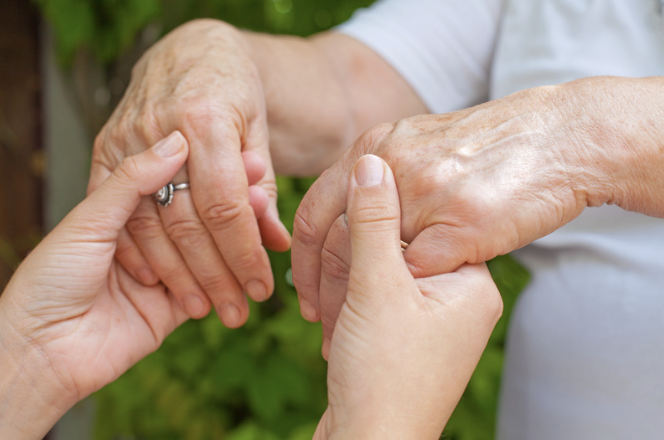By: Amy Bruno, Ph.D., ANP-BC
April is Parkinson’s disease (PD) Awareness Month. In the United States (US), approximately 90,000 people are diagnosed with PD each year and an estimated 1.2 million people will be living with PD by 2030.1 Parkinson’s disease is the 14th leading cause of death in the US.2 Globally, more than ten million people have PD and it is the second most common neurodegenerative brain disorder after Alzheimer’s disease.1 This progressive neurological disorder is more commonly diagnosed in individuals who are older than age 65 and PD tends to have a slight male predominance.
The main pathophysiological change in PD is a gradual loss of dopaminergic producing neurons in the basal ganglia region of the substantia nigra and the development of Lewy Bodies in affected neurons.2 However, it is important to recognize that Lewy Bodies can be found in other neurodegenerative disorders so they are not specific to PD.2 It is now widely known that PD is truly a heterogeneous disorder compromised of variable motor and nonmotor clinical manifestations with differing degrees of progression.2,3 PD is theorized to be caused by a combination of genetic and environmental factors.4 Advancing age is a definitive risk factor1 and approximately 10-15% of cases are likely due to genetic causes.4 Proposed environmental risks include pesticide or heavy metal exposure and repeated head injuries. 1.4
The diagnosis is largely clinical, and the classic triad of symptoms include: 1. Resting tremor 2. Bradykinesia 3. Rigidity.2 These motor symptoms are initially unilateral and as the disease advances, symptoms will become bilateral.2 Postural instability can be present, although this tends to appear when PD is more advanced.1,2 It is imperative to know that PD is not just a motor disease and that it encompasses several non-motor symptoms which oftentimes can be even more distressing than motor symptoms and are associated with a poorer quality of life (QOL).1,2,3,4
Non-motor symptoms (NMS) may include fatigue, cognitive decline, anxiety, depression, apathy, pain, sleep disturbance, constipation, olfactory changes, speech and swallowing difficulties, and vision changes.1,2,4 People who have PD are at an increased risk of melanoma. As the disease progresses, NMS may include the development of autonomic dysfunction and individuals can experience urinary dysfunction and orthostatic hypotension.1,2,4
Given the varying presentation of this disorder, patients should be evaluated by a movement disorder specialist neurologist for diagnostic confirmation. Advanced practice nurses (APNs) should prioritize symptom management and the involvement of an interdisciplinary care team including physical and occupational therapies, speech pathology, and home care services when indicated. Pharmacological management focuses on reducing symptoms such as tremor and bradykinesia. Exercise has been shown to be neuroprotective.1,2,4 In some cases, deep brain stimulation (DBS) surgery is advised. APNs who care for patients with PD should incorporate screening for NMS during patient visits as these symptoms are often not recognized by the patient or provider as being part of the disease process and addressing this may improve one’s overall quality of life.
References:
- Understanding Parkinson’s: Statistics. Parkinson’s Foundation. Accessed April 17, 2023. https://www.parkinson.org/understanding-parkinsons/statistics
- Halli-Tierney, A. D., Luker, J., Carroll, D. G. Parkinson Disease. Am Fam Physician. 2020; 102(11): 679-691. Accessed April 17, 2023
https://www.aafp.org/dam/brand/aafp/pubs/afp/issues/2020/1201/p679.pdf
- Greenland, J.C, Williams-Gray, C. H., Barker, R. A. The clinical heterogeneity of Parkinson’s disease and its therapeutic implications. Eur J Neurosci. 2019; 49(3): 328-338. doi: 10.1111/ejn.14094
- Potential Causes of Parkinson’s Disease. American Parkinson’s Disease Association. Accessed April 17, 2023. https://www.apdaparkinson.org/what-is-parkinsons/causes/

